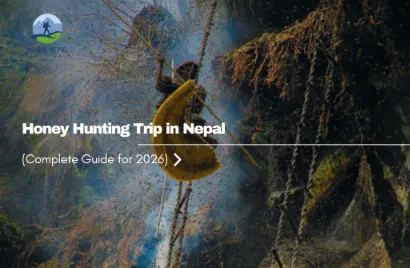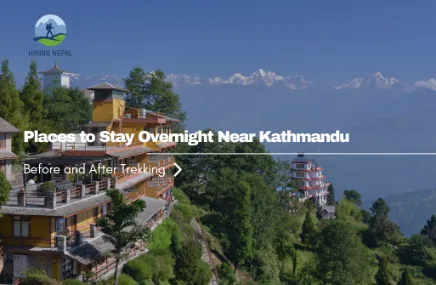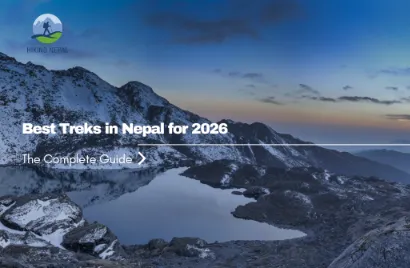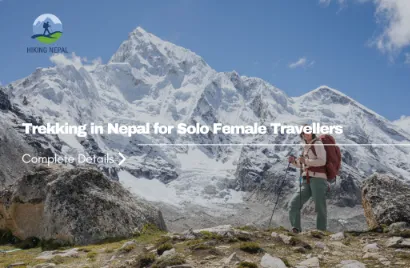Manaslu Larke Pass Trek Complete Detail
The Manaslu Larke Pass Trek is one of Nepal’s most captivating and less crowded trails. It circles Mount Manaslu, the world’s eighth-highest mountain, and crosses the dramatic Larke La Pass at 5,160 meters. This journey blends wild mountain scenery, Tibetan-influenced culture, and remote high-altitude adventure.
The Manaslu region lies in north-central Nepal between the Annapurna and Langtang ranges. It opened to trekkers only a few decades ago, so the area still feels untouched. Villages like Samagaon and Samdo hold ancient Buddhist monasteries, prayer walls, and yak herds grazing on high pastures. As you walk along the Budhi Gandaki River and rise toward the glaciers, the landscape shifts from dense forests to cold alpine wilderness.
For those seeking a quieter, more authentic alternative to Annapurna or Everest, the Manaslu Larke Pass Trek is perfect. It offers both cultural richness and adventure without the heavy crowds.
Highlights
- Scenic diversity: From subtropical valleys and rhododendron forests to high alpine glaciers and barren mountain ridges.
- Cultural depth: Experience Tibetan Buddhist traditions, ancient monasteries, mani walls, and welcoming villages like Lho, Samagaon, and Samdo.
- Larke La Pass (5,160 m): A challenging yet breathtaking crossing surrounded by peaks like Manaslu (8,163 m), Himlung, Cheo Himal, and Annapurna II.
- Less crowded: Compared to other major treks, the Manaslu trail remains peaceful, giving space to connect with nature and locals.
- Authentic homestays and teahouses: Stay in family-run lodges, enjoy warm dal bhat, yak butter tea, and genuine Nepali hospitality.
What to Expect
The trek typically takes 12 to 16 days, depending on your starting point and acclimatisation schedule. Most routes begin with a drive from Kathmandu to Machha Khola or Soti Khola, then gradually follow the Budhi Gandaki River upstream.
As you climb higher, the terrain becomes steeper and the air thinner. You’ll pass suspension bridges, waterfalls, and narrow trails carved into cliffs. After reaching Samagaon, trekkers usually spend an extra day to acclimatise and explore the base of Mount Manaslu or Pung Gyen Gompa.
Crossing Larke La Pass is the most challenging yet most rewarding part of the trek. The climb starts before dawn, often over snow and strong winds, but when you stand on top, the Himalayan panorama is unforgettable. The descent to Bimthang offers an entirely different world: lush valleys, glacial rivers, and pine forests, before finally ending near Dharapani.
Expect a blend of long walking days, cold mornings, changing weather, and pure Himalayan wilderness. But every challenge comes with immense beauty and a deep sense of accomplishment.
Manaslu Weather
The weather in the Manaslu region changes quickly, depending on altitude and season. The lower valleys remain warm and humid, while higher areas near the pass can drop below freezing. The best seasons for this trek are autumn (September to November) and spring (March to May).
During autumn, skies are clear, views are sharp, and the air is crisp and ideal for photography and stable trekking. In spring, the rhododendron forests bloom, wildlife becomes more visible, and temperatures are moderate.
Standard Manaslu Larke Pass Trek Itinerary
Day 1: Arrival in Kathmandu (1,300 m)
Arrive in Kathmandu, meet your guide, and prepare for permits and trekking gear.
Day 2: Drive from Kathmandu to Machha Khola (870 m)
A scenic 7–8 hour drive through hills, rivers, and local villages. Overnight in a teahouse.
Day 3: Machha Khola to Jagat (1,340 m)
Trek along the Budhi Gandaki River, crossing small bridges and waterfalls.
Day 4: Jagat to Deng (1,860 m)
Pass through dense forest and stone steps, entering Buddhist cultural zones.
Day 5: Deng to Namrung (2,630 m)
Enjoy views of Siringi Himal and explore small monasteries.
Day 6: Namrung to Lho (3,180 m)
The trail climbs steadily with amazing views of Manaslu North and Ganesh Himal. Visit the Lho Monastery.
Day 7: Lho to Samagaon (3,530 m)
Walk through pine forests to Samagaon, a large village beneath Mount Manaslu. Explore Ribung Monastery and nearby fields.
Day 8: Acclimatization Day at Samagaon
Optional hike to Manaslu Base Camp or Pung Gyen Gompa. Rest and adjust to altitude.
Day 9: Samagaon to Samdo (3,860 m)
A short but gradual climb through yak pastures and open valley landscapes.
Day 10: Samdo to Dharamsala/Larke Phedi (4,460 m)
Short trekking day to prepare for the pass crossing. Rest early for the next day.
Day 11: Cross Larke La Pass (5,160 m) to Bimthang (3,720 m)
Start before dawn for the most challenging section. Breathtaking Himalayan views at the top, followed by a long descent.
Day 12: Bimthang to Tilje (2,300 m)
Walk through rhododendron forests and streams. Stay overnight in Tilje village.
Day 13: Tilje to Dharapani (1,860 m) and Drive to Kathmandu
Join the Annapurna Circuit trail, then take a drive back to Kathmandu.
Day 14: Departure Day or Free Exploration in Kathmandu
Relax, shop, or visit heritage sites before departure.
Temperature and Weather of Manaslu Larke Pass Trek Throughout the Year
Month | Temperature (°C) | Weather Condition | Trekking Suitability |
| January – February | -10 °C to 10 °C | Cold, possible snow, clear skies | Possible but very cold at high altitudes |
| March – April | 0 °C to 18 °C | Warm days, blooming forests | Excellent season |
| May – June | 5 °C to 20 °C | Warm, pre-monsoon rain | Good but slightly humid |
| July – August | 8 °C to 22 °C | Monsoon rain, leeches in lower regions | Not recommended |
| September – October | 0 °C to 18 °C | Clear skies, best visibility | Best season |
| November | -5 °C to 15 °C | Dry and cold, stable weather | Excellent trekking time |
| December | -8 °C to 10 °C | Cold, snow in the higher passes | Possible with good preparation |
Required Equipment During the Manaslu Trek
Because the Manaslu trail includes both low valleys and high alpine passes, you’ll need gear that can handle changing temperatures and terrain.
Essential gear includes:
- Trekking boots with good ankle support
- Warm sleeping bag (rated to -15 °C or lower)
- Thermal layers and a down jacket
- Windproof and waterproof shell
- Trekking poles for the Larke Pass section
- Gloves, hats, sunglasses, and sunscreen
Headlamp with spare batteries
Water purification tablets or a filter - Reusable water bottle
- Basic first-aid kit and altitude medicine
- Energy snacks and extra batteries for cold weather
As this trek enters a restricted area, you’ll also need a Manaslu Restricted Area Permit, an MCAP (Manaslu Conservation Area Permit), and an ACAP (Annapurna Conservation Area Permit). Trekking must be done through a registered local agency, such as Hiking Nepal, with at least two trekkers and a licensed guide.
Permits and Regulations
The Manaslu region is a restricted area, so independent trekking is not allowed. You must trek through a registered agency like Hiking Nepal, with at least two trekkers and a licensed guide.
You’ll need:
- Manaslu Restricted Area Permit (RAP)
- Manaslu Conservation Area Permit (MCAP)
- Annapurna Conservation Area Permit (ACAP)
FAQs
1. How long does the Manaslu Larke Pass Trek take?
Most itineraries range from 14 to 16 days, depending on acclimatization and travel days.
2. Is it safe to trek in the Manaslu region?
Yes. With a licensed guide and proper acclimatization, the trek is safe. Hiking Nepal follows standard safety protocols and emergency evacuation procedures.
3. What permits are required?
You need a Manaslu Restricted Area Permit, Manaslu Conservation Area Permit, and Annapurna Conservation Area Permit.
4. What is the hardest part of the trek?
Crossing Larke La Pass is the most challenging due to cold, altitude, and long walking hours, but it’s manageable with preparation.
5. Can beginners do this trek?
Yes, beginners with good fitness levels can complete it. Hiking Nepal ensures proper acclimatization and guidance throughout.
6. Are there ATMs or internet access on the trail?
ATMs are not available after Soti Khola. Some teahouses offer paid Wi-Fi, but connectivity is unreliable.
7. When is the best time to trek Manaslu Larke Pass?
Autumn (September–November) and spring (March–May) are ideal seasons for stable weather and clear views.
The Manaslu Larke Pass Trek is one of Nepal’s last truly authentic high-mountain adventures. It captures the raw essence of the Himalayas unspoiled landscapes, ancient culture, and the quiet determination of those who walk them.
You’ll experience the warmth of mountain communities, nights under clear starlit skies, and the challenge of crossing one of the most beautiful passes in the world. This trek isn’t just about reaching a destination; it’s about the journey through deep valleys, sacred monasteries, and the serene silence of the high Himalayas.
If you’re searching for a trek that feels real, remote, and unforgettable, Manaslu Larke Pass is it.







